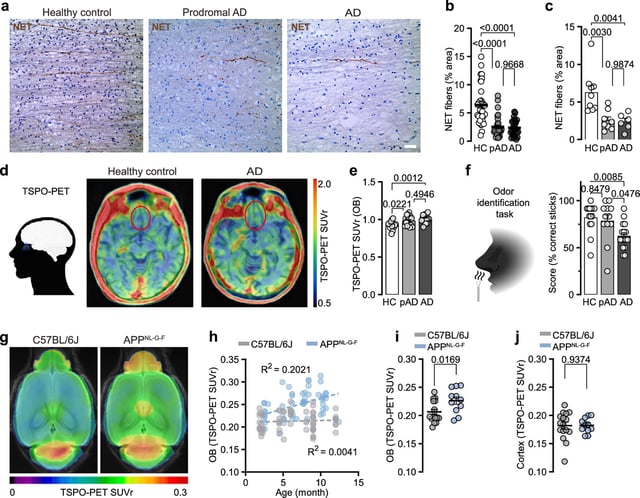Overview
- In AppNL-G-F mice, locus coeruleus axons in the olfactory bulb declined by 14% at two months and 33% by six months before plaques or cortical damage appeared
- Phosphatidylserine exposure on hyperactive fibers acted as an eat-me signal that attracted microglia to engulf noradrenergic connections
- Genetic deletion of microglial TSPO in the mouse model prevented axon loss and preserved performance on smell tests
- Post-mortem analysis of early Alzheimer’s tissue showed reduced norepinephrine fibers in human olfactory bulbs and TSPO-PET scans revealed elevated signals in individuals with mild cognitive impairment
- Researchers note that broader validation in additional animal models and larger human cohorts is needed before smell tests or TSPO imaging can guide early diagnosis or intervention
